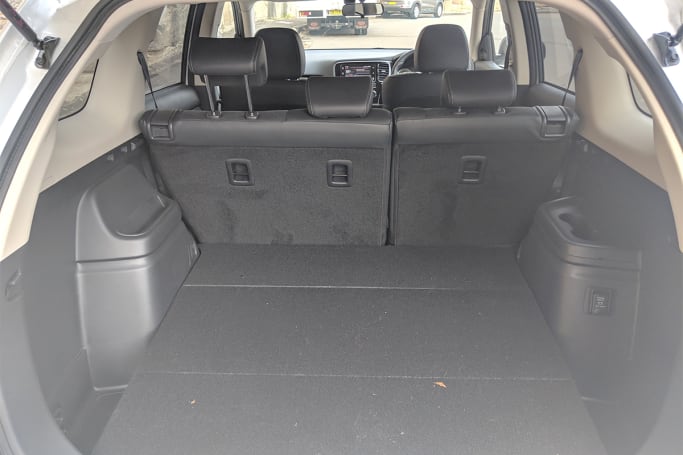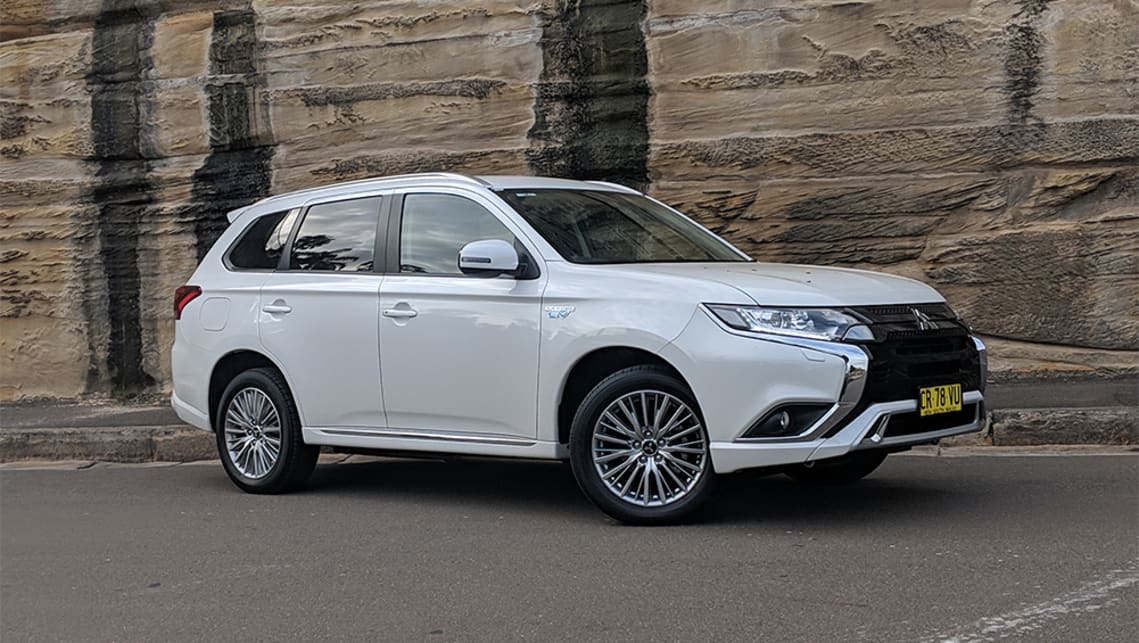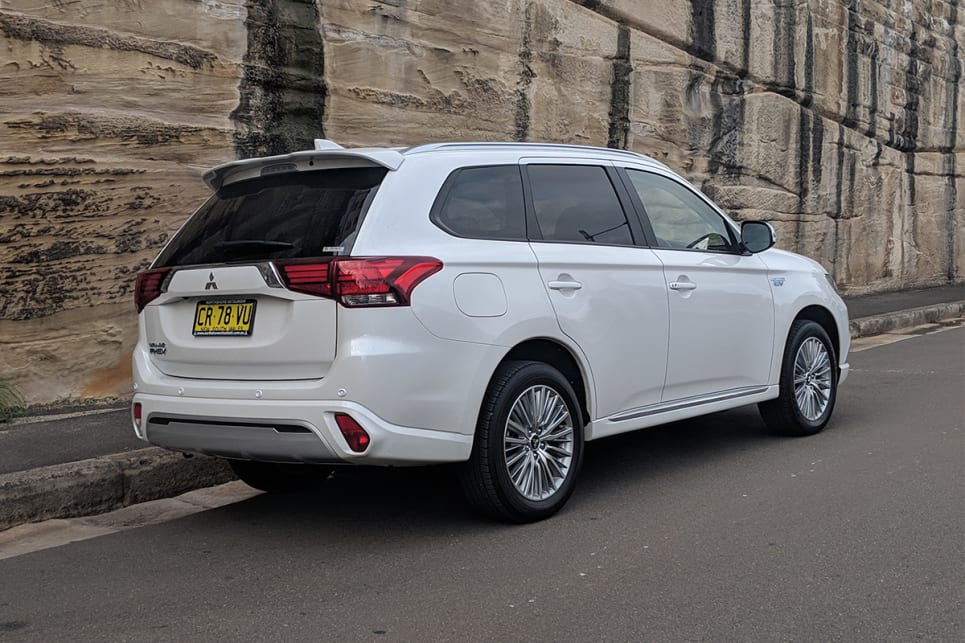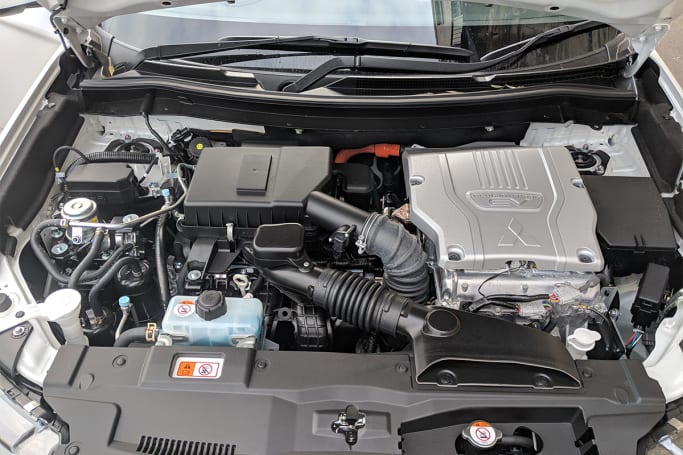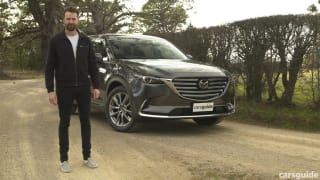I dragged the kids off to a Kombi festival in the morning followed by shopping and a visit to the park in the afternoon.
It takes around six hours to charge the PHEV from a domestic circuit (AC240 10A socket), which seems a long time to only deliver 54km of range. A fast charger is available to get you to 80 per cent charge in 25 minutes. Once you’re moving, though, the PHEV has a number of EV modes designed to help increase this range. More on this later.
The Outlander's exterior has barely changed since its initial launch, with this latest generation featuring a stylish front nose familiar to ASX drivers, and an overall cleaner look with no body kit or side skirts. The key distinguishing feature of the PHEV is its electric blue badging located on the front quarter panels and on its rump.
The Outlander ES models come in a choice of Starlight white (which my test car was dressed in) or Red Titanium, or for an extra $500 you can have Ruby Black.
Inside, there are a number PHEV-only features peppered throughout a fairly basic-looking cabin. The dash layout is simple and tidy, however the buttons and dials look a little dated.
Before setting off for the Kombi festival my son synced up the smartphone to Mitsubishi's 7.0-inch touchscreen via the Bluetooth in preparation to blast the playlist through the six-speaker sound system. Apple CarPlay and Android Auto come standard, which is good news.
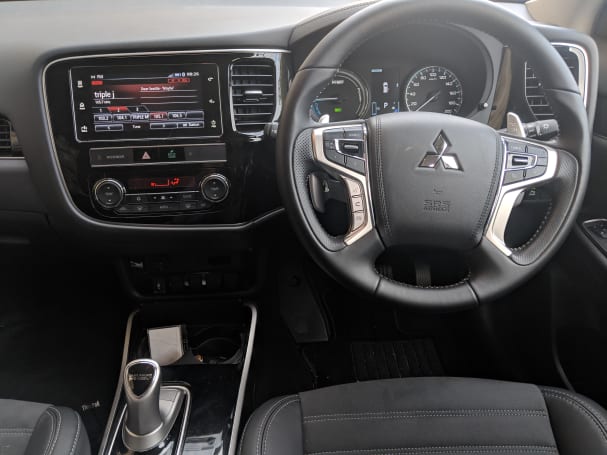
The seats are covered in micro-suede trim, with synthetic leather used for the seats bolsters and head rests that provides a quality look and reasonable amounts of comfort. Passenger space is pretty good, too, with head and legroom in the rear good for adults and kids. There was more than a hand-width gap between my knees when sitting behind my driving position. Similar story with head room.
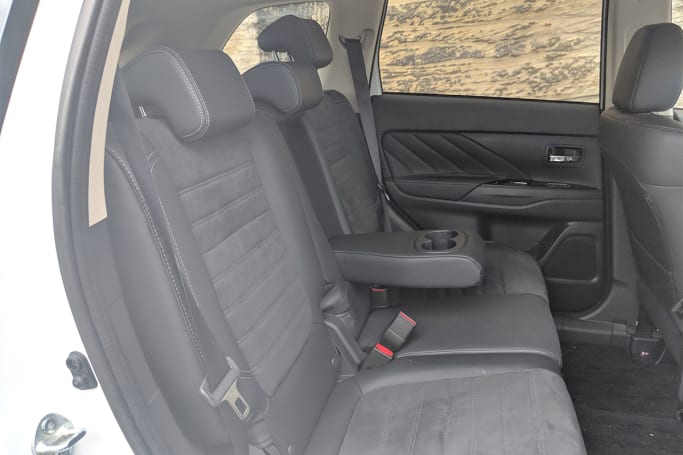
Front and rear rows score a pair of cupholders each, and there's a bottle holder in each door. The boot has 463 litres (VDA) of space increasing to a very decent 1602 litres with the rear seats folded down.
